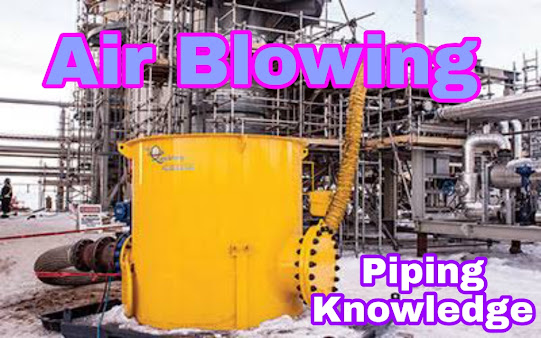BASIC OF GASKET &TYPES.
Basic knowledge of Gasket.
Basic Definition of Gasket.
Purpose of Gasket Used.
Types of Gasket.
Spiral wound Gasket
Kammprofile Gasket
Metallic - Ring Gasket or RTJ Gasket
Application of Gasket
What is common Gasket Materials
ASME Code of Gasket.
Definition Of Gaskets.
- A gasket is a common term used to describe any seal or grommet that holds two things together. You can make gaskets from rubber, plastic, metal, and other materials.
- A gasket is mechanical seal that fills the space between two objectives,generally to prevent leakage between the two objectives while under compression.
- A gasket is a malleable material, which can be either soft or hard,that is inserted between two parts to prevent leakage between that joint.
- Pressure is applied by bolting or using a clamp to compress the gasket firmly in place.
- Gaskets are made from all different types of materials, depending on the temperature, pressure or fluid characteristics of the process.
Purpose of Gasket Used:-
- To prevent leakage around the closure mechanism.
- To prevent leakage of fluid to atmosphere.
- To allow the function of internal mechanism that depends on separate fluid chambers, such as pressure balance trim.
Types of Gasket:-
- There are three types of gaskets used in process piping.
- Non-Metallic
- Metallic
- Composite
1. Full Face
Full-face gasket types are suitable for flat-face (FF) flanges. Flat ring gasket types are suitable for use with raised faced (RF) flanges.
2. Inside Bolt Circle
3. Spiral Wound Metallic
4. Ring Type
5. Metal Jacketed.
Non-Metallic Gasket
- The most common materials used for this type of gaskets are Graphite, Rubber, Teflon, PTFE, and Compressed Non-Asbestos Fiber (CNAF).
- These gaskets are also known as a Soft gasket. It can be full face or inside bolt circle type.
- Non-Metallic gaskets can easily compress with low tension bolting
- These types of gaskets are used with low-pressure class flanges such as 150 and 300 Class and also in low-temperature However, graphite gasket can be used up to 500 Degree centigrade
- Rubber gaskets are not used in hydrocarbon services but used in utility lines.
- Non-Metallic gaskets are cheapest and easily available.
Metallic - Ring Gasket or RTJ Gasket:-
- Metal gaskets are manufactured from a material such as Soft iron, Low Carbon steel, Stainless Steel, Monel, and Inconel.
- These gaskets are also known as ring gasket or RTJ gaskets.
- Metallic gaskets are used in high-pressure class flanges, normally above 900 Class, they can also be used for high-temperature
- High tension bolting is required when we used metallic gaskets.
- They are very robust & most costly.
- The RTJ Gasket fits in a groove machined on the flange face of both mating flanges.
- There are two types of the metallic gasket are used with RTJ flange Octagonal and Oval.
Composite Gasket or Semi-Metallic:-
- Composite gaskets are a combination of metal and non-metal material. Different types of combinations of materials are possible based on the service requirement.
- Spiral wound, Metal Jacketed, and Kamprofile gasket are well known in the composite gasket category. They are used in a wide range of pressure and temperature services.
- Composite gaskets are cost effective compare to metal gaskets but Careful handling is required.
- Composite gaskets are used on raised face, male-female, and tongue-and-groove flanges.
Spiral Wound Gasket:-
- The most widely used composite type gasket is a Spiral Wound Gasket. It is suitable for a wide range of pressure and temperature class. Normally Graphite or PTFE used as filler material & stainless steel or other exotic material is used as the winding material.
- There are three components in the spiral wound gasket. Inner & Outer ring, filler material, and winding material. However, sometimes an inner ring is not used. You can see in the image spiral wound gasket with and without inner ring.
Kammprofile Gasket:-
- Kammprofile Gasket is having a solid metal core with concentric grooves. Filler material, either graphite or PTFE is layered on this grooved metal ring.
- It is Costlier than Spiral wound gasket but provides better blowout resistance and easy to handle even in large diameters.
Application of Gasket:-
- A leak from the flange joint can be disastrous. A flange leak results in loss of product and energy.
- No plant operator wants to leak of toxic or hazardous material that can harm humans and the environment.
- Gaskets are a part that's cut from some form of flexible material. The gasket is placed between two other surfaces, most commonly to create a seal between them.
- The purpose is to prevent the leakage of some type of liquid, stopping vibration or mounting items to walls or the outsides of buildings.
How to select Gasket ?
- Environment. Consider the environment of the seals.
- Application. This is an obvious, but nevertheless important, factor.
- Regulations. Sometimes factors outside the scope of the job can affect your choices.
- Chemical compatibility. ...
- Flange design.
- Compatibility of the gasket material with the fluid.
- Ability to withstand the pressure-temperature of the system.
- The service life of the gasket
What is common Gasket Materials?
- Non-Metallic Gasket is manufactured from flexible materials.
- Compressed Non-Asbestos fiber
- PTFE
- Rubber
- Mica
- And Ceramic fiber











Comments
Post a Comment